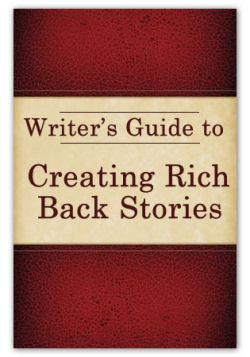|
You’d
have to be living under a rock not to have heard of E. L. James’s
erotic trilogy. Fifty Shades of Grey, Fifty Shades Darker,
and Fifty Shades Freed have made their way around the social
media sites like an airborne virus.
I read the book, gave a clinical
analysis of it, and received flack because of what I said. But I’m glad
I did, because now I can educate my readers on why I would encourage
them not to read it.
This article isn’t to debate why
Christians shouldn’t read the book. Those reasons are plentiful (sex
outside of marriage is wrong, erotica can lead to lustful thoughts and
damage interpersonal relationships, etc.) and have been extolled by
Christian pundits the world over.
In contrast, this article is why
everyday John and Jane Does shouldn’t read the book.
A caveat is needed at this
point. As a marriage and family therapist, conversations with clients
about sex are a regular part of my job. As such, whether for the good
or for the bad, sex is as much a clinical subject as depression or
anxiety, but I realize this is not the case with the majority of the
population.
So on to the four reasons why
people should not to read the Fifty Shades trilogy.
Warning: a few spoilers follow.
1) There is an abusive
quality to the main character’s relationship.
As exciting and dangerous as
readers are led to believe the romance is, Grey’s hold on Ana is more
of an abusive one than a healthy one. One tactic of abusers is to
isolate their victims. Grey engages in this . . . and does it so subtly
that it is masqueraded as protection.
He wants her to sign the
nondisclosure agreement, essentially rendering her mute to discuss any
aspect of their personal relationship. Read: not normal. This isolates
her from her friends/support system who care about her. Definitely an
abuser tactic.
He stalks her whereabouts using
her cell phone, changes plane reservations without her consent, flies
to Georgia while she’s visiting with her mother (even though she had
requested time away from him), and even buys the publishing business
she works for so he can “keep an eye on her.” He gets insanely jealous
if she spends time with any other guy.
Ana’s acts of “defiance”
supposedly make her more independent, but her defiance is in her having
very reasonable boundaries and expectations. Abusers try to mess with
their victim’s heads in making them think they are crazy, or asking too
much, or somehow lacking. Ana constantly worries that she won’t be
“enough” for Grey.
One online writer said, “We’re
supposed to think the way Christian [Grey] isolates Ana in luxury is
romantic. A prison is still a prison when the sheets are 1200 thread
count.”
2) Love at the price
Ana pays for it is too high . . . even for fiction.
From toddlerhood, little girls
are introduced to fairy tales and Prince Charming. Ana is no different.
She wants “hearts and flowers,” which Grey freely says he can’t give
her. He also tells her he’s not the guy for her and that she should
stay away from him, all of which should make a girl run in the opposite
direction.
|
But
not sweet, virginal Ana, the character in the book with whom women are
supposed to identify.
Ana gives up her very
normalromantic notions, believing that for her to have her
Prince Charming, she has to. His attempts to control every aspect of
her life are tolerated by Ana because she knows early on that Grey
clearly has issues, and later on because he loves her. This sends a
message to women that settling for less is okay, even preferable, to
walking away or being alone.
3) It perpetuates the
lie of a
female “savior.”
At one point, Ana thinks: “This
man, whom I once thought of as a romantic hero, a brave shining white
knight—or the dark knight as he said. He’s not a hero; he’s a man with
serious, deep emotional flaws, and he’s dragging me into the dark. Can
I not guide him into the light?”
No, the reality is that more
than likely you can’t. Reading a book of this nature can more firmly
ingrain this innate desire women seem to harbor to “save” men—bad boys,
in particular. This desire is more about the woman being special
enough, awesome enough, to make the man change than it is about the
man. Books like Fifty Shadeswill only make this
impulse worse.
4) Bondage and
discipline, sadism and masochism (BDSM) is pathologized.
The truth is that couples of all
sorts (yes, even married Christians) engage in mutually beneficial BDSM
relationships. People in the BDSM community feel marginalized, because
apparently James did not utilize actual people who engage in BDSM for
her research. Not all people who engage in what average people might
call “kinky sex” are doing it to work out their childhood trauma or
control issues.
So there are four reasons why I
don’t think people should read the book. This is my way of saying that
even though I reviewed the book, I wouldn’t necessarily recommend it
for others, especially highly suggestible readers.


|